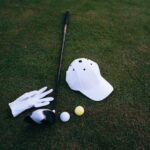Ryder Cup: What We Can Learn from Practice Pairings and History
By Brentley Romine
Rome, September 28, 2023
The highly anticipated Ryder Cup is just around the corner, and golf enthusiasts around the world are eagerly awaiting the opportunity to witness their favorite players compete on the grand stage. As the 43rd edition of the biennial matches approaches, there is much speculation about the pairings that will take the field. Captains Luke Donald and Zach Johnson are faced with the daunting task of strategizing and selecting the optimal partnerships. While much of the decision-making process remains shrouded in secrecy, there are valuable lessons to be learned from both practice pairings and the tournament’s rich history.
The Importance of Ryder Cup Pairings
When it comes to the Ryder Cup, the chemistry and compatibility between playing partners can greatly influence the outcome of each match. The Captains have a plethora of resources at their disposal, ranging from analytical data to personality tests and player feedback, in order to determine the most effective pairings. The objective and subjective factors considered by the teams make the decision-making process intricate and multi-faceted.
While some pairings can be deduced based on past performances and practice sessions, the final decisions are kept under wraps until the matches begin. For instance, it is highly likely that Patrick Cantlay and Xander Schauffele will team up in the foursomes sessions, given their success as a pair in 2021. Similarly, Jordan Spieth and Justin Thomas have a history of successful partnerships, having played together four times in 2018 and achieving a remarkable 4-0 record in last year’s Presidents Cup.
The American roster boasts several potential duos that seem promising. Best friends Scottie Scheffler and Sam Burns, who have previously teamed up at the 2022 Presidents Cup, could bring their camaraderie to the Ryder Cup. Max Homa and Wyndham Clark, who have practiced together, also have the potential to form a formidable partnership. As for Brooks Koepka, finding the right partner may be more challenging, but Brian Harman’s mental toughness makes him a possible contender.
On the European side, the absence of stalwarts Sergio Garcia, Lee Westwood, and Ian Poulter opens up opportunities for new partnerships. The pairing of Rory McIlroy and Shane Lowry, eager to redeem themselves after their disappointing performance in the previous Ryder Cup, is a strong possibility. Tommy Fleetwood and Viktor Hovland, who played together twice in 2021, could also form a formidable partnership. However, the practice round groupings suggest that Jon Rahm and Tyrrell Hatton might also play together, given their fiery personalities.
The Role of Golf Balls in Pairing Decisions
One factor that comes into play when determining partnerships is the choice of golf ball. The type of golf ball used can have a significant impact on performance, particularly on iron shots and around the greens. Different golf balls have distinct characteristics, including spin rates and feel, which can influence a player’s strategy and shot execution.
Players, however, tend to be adaptable and believe that golf balls, especially those used off the tee, react similarly. They argue that if they are paired with a player using a different golf ball, they can simply adjust their strategy accordingly. For instance, one player can hit the other player’s ball off the tee, while the other can use their own ball for approach shots and putting.
Nevertheless, the spin rates and feel of different golf balls can pose challenges in certain situations, particularly when playing into the wind. A difference of 200 or 300 more revolutions per minute in spin rate can significantly affect a shot’s trajectory. As a result, players strive to become comfortable with using different golf balls and remain mindful of the potential impact they can have on their game.
Lessons from Past Ryder Cup Partnerships
The Ryder Cup’s rich history provides valuable insights into successful pairings and strategies. Examining past partnerships can offer clues about the potential success of certain combinations.
In the 2021 Ryder Cup, the pairings of Spieth/Thomas and Cantlay/Schauffele had proven successful in both foursomes and four-ball sessions. This history may influence the decisions made by the U.S. Captain for the upcoming matches. Similarly, the 2018 Ryder Cup saw Spieth/Thomas partnering successfully in both foursomes and four-ball, indicating the strength of their chemistry on the course.
Examining the golf balls used by players can also offer insights into past partnerships. Certain golf ball brands, such as Callaway, TaylorMade, Srixon, and Titleist, have been favored by Ryder Cup competitors. Understanding the golf ball preferences of players may further inform the selection of pairings.
Conclusion: Finding the Winning Formula
The Ryder Cup is more than just an exhibition of individual prowess; it is a showcase of teamwork and strategic pairing. Captains Luke Donald and Zach Johnson face the formidable task of pairing players who complement each other’s strengths and play styles. Practice sessions and historical partnerships surely provide valuable information, but the final decisions must consider numerous factors.
As golf enthusiasts eagerly await the commencement of the Ryder Cup, they can reflect on the lessons learned from practice pairings and the tournament’s history. The chemistry between playing partners, the influence of golf balls, and successful partnerships from the past all contribute to the captivating storylines that unfold on the Ryder Cup stage.
Ultimately, the Ryder Cup will reveal which teams have uncovered the winning formula for success. As spectators, we can revel in the drama, camaraderie, and unmatched excitement that comes with this prestigious event.

<< photo by Allan Nygren >>
The image is for illustrative purposes only and does not depict the actual situation.
You might want to read !
- Rory McIlroy’s Pursuit of Victory at Irish Open: Live Updates and Analysis
- “Québec Cities Rally for Disaster Funding Amidst Verglas, Forest Fires, and Tornadoes”
- Aaron Rodgers Unleashes Verbal Fire on Giants LB in Overheard Microphone Moment
- The Battle for Golf Supremacy: A Complete Guide to Ryder Cup 2023 Tee Times and Schedule
- BCLC Anticipates 20% Surge in Ticket Sales as Lotto 6/49 Reaches New Heights
- Newcastle Demolish Sheffield in Record Premier League Victory




